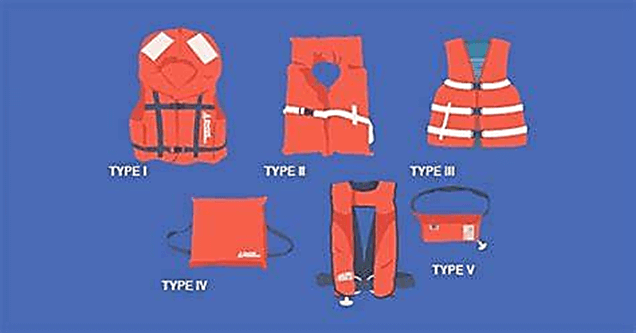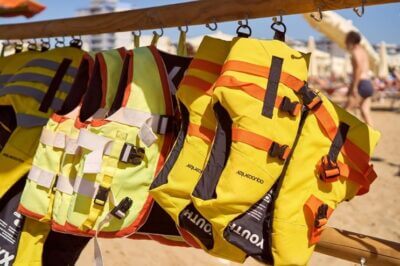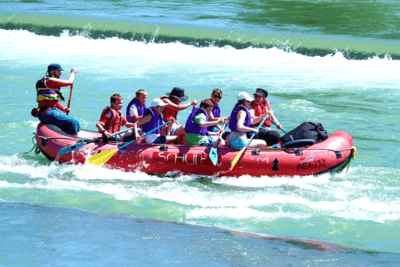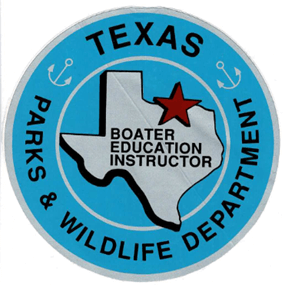It’s National Safe Boating Week!
Types of Life Jackets: A Guide for Water Recreation
 Life jackets, also known as personal flotation devices (PFDs), are essential pieces of gear for anyone who enjoys boating, kayaking, canoeing, paddle-boarding, or any kind of water recreation. They provide vital buoyancy to help you stay afloat in water, and can save your life in an emergency.
Life jackets, also known as personal flotation devices (PFDs), are essential pieces of gear for anyone who enjoys boating, kayaking, canoeing, paddle-boarding, or any kind of water recreation. They provide vital buoyancy to help you stay afloat in water, and can save your life in an emergency.
But, not all life jackets are the same— there are different types of life jackets designed for different purposes, conditions, and preferences, and many different ways to categorize them. Before engaging in any activity around the water, it is important to understand the different types of life jackets, and how to choose the best one for you.
The U.S. Coast Guard has categorized life jackets (or PFDs) into Types I, II, III, IV, and V, depending on the situation intended for their use:
Type I Life Jackets
Type I life jackets, also known as offshore life jackets, are designed to provide the most flotation and coverage, especially open or rough water. They are mandatory for commercial vessels and recommended for boaters who cruise, race, or fish offshore, or who boat alone or in stormy conditions.
Type I life jackets offer a minimum buoyancy of 22 pounds for inherently buoyant PFDs, and 34 pounds for inflatable Types. This jacket keeps the wearer high above water, and has the distinct advantage of turning most unconscious wearers face-up in the water, which increases the chances of survival and rescue.
Type I life jackets offer the best protection, but are also bulk and can be uncomfortable for recreational use. Type 1 life jackets may restrict your movement, or cause overheating on a hot day. They also do the best job of retaining body heat, as they have additional foam and fabric, and keep your head higher above water. This may be beneficial in cold water conditions, but may not be comfortable in warmer water. Inflatable Type I jackets are rare, as they are extremely expensive to make, and are usually made for military or intensive commercial use.
Type II Life Jackets
Type II life jackets are also known as near-shore life jackets, designed to provide adequate flotation and coverage in protected, inland water near shore, where chances of quick rescue are good. They are suitable for boating in light craft, or for supervised activities.
Type II life jackets offer a minimum buoyancy of 15.5 pounds for adult size models, 34 pounds for inflatable models, and keep the wearer slightly above the water. These jackets also designed to turn an unconscious wearer face-up in the water, but may not be as effective as Type I life jackets in this regard.
Type II life jackets are more comfortable but less buoyant than Type I life jackets. They are usually made from bulky foam, and have a single-strap or boxy design. They may not be suitable for extended survival in rough water, as they often require you to tread water in order to keep your head above the waves. This type may also not provide enough warmth or enable visibility in rough weather conditions.

Type III Life Jackets
Type III life jackets are also known as flotation aids, designed to provide flotation and comfort in calm, inland water where rescue is likely to be quick. They are specialized for water activities such as fishing, kayaking, canoeing, paddle boarding, or water skiing.
Type III life jackets for adults offer a minimum buoyancy of 15.5 pounds, 22.5 for the inflatable version. These are designed to allow for more freedom of movement and breathability, with a shorter cut so as to not interfere with your seat or backrest in a kayak or canoe, and large armholes that allow for paddling without chafing.
Type III life jackets are not designed to turn unconscious wearers face-up in the water, so they are not suitable for situations where you may lose consciousness or panic. Type III jackets also not as effective in rough or cold-water conditions.
Type IV Life Jackets (PFDs)
Type IV life jackets (or PFDs) are also known as throwable devices, designed to provide backup flotation in case someone falls overboard or needs extra support. They are not meant to be worn, but to be thrown to a person in distress.
Type IV PFDs include seat cushions, ring buoys, and horseshoe buoys that have at least 16.5 pounds of buoyancy for adult size models. They can help keep a person afloat until rescue arrives, or until they can reach a wearable life jacket on-board.
Type IV PFDs are not suitable for non-swimmers or unconscious people, as they may not be able to hold on or keep their face above water. They are also not very comfortable or convenient to use, because they require manual adjustment and positioning.
Type V Life Jackets
Type V life jackets are also known as special-use devices, designed to provide flotation and features for specific activities or conditions that require them. They have different performance characteristics than other Types of life jackets, and may have restrictions on their use.
Type V life jackets include inflatable vests and waistpacks that offer more comfort and flexibility than standard life jackets, but require activation to provide flotation. They also include hybrid vests that combine foam and inflation mechanisms for more buoyancy and reliability.
 Type V life jackets vary in their minimum buoyancy, depending on their design and inflation status. Some offer Type I performance (22 pounds), some offer Type II performance (15.5 pounds), and some offer Type III performance (22.5 pounds). They may also have additional features, such as harnesses, pockets, reflective tape, or whistles.
Type V life jackets vary in their minimum buoyancy, depending on their design and inflation status. Some offer Type I performance (22 pounds), some offer Type II performance (15.5 pounds), and some offer Type III performance (22.5 pounds). They may also have additional features, such as harnesses, pockets, reflective tape, or whistles.
Standard vs. Inflatable Life Jackets
Another way to categorize PFDs is by standard and inflatable. Standard or inherently buoyant life jackets are the type most people are familiar with—these look like vests, and are filled with foam or other flotation material. On the other hand, inflatable life jackets are a newer, more compact invention. This type of jacket relies on carbon dioxide gas cartridges, which quickly inflate the jacket when activated manually or automatically.
Standard Life Jackets
Standard life jackets can be any Type, but are usually Type III, meaning they are suitable for inland and near-shore waters where quick rescue is likely. They offer a minimum buoyancy of 15.5 pounds for adults, and have advantages and disadvantages.
Pros of standard life jackets:
– Low-maintenance: It is not necessary to replace any parts or check for leaks with standard life jackets. Just keep clean, dry, and out of direct sunlight when not in use.
– Inherently buoyant: Standard life jackets do not require any activation to provide flotation. Simply put them on properly, and adjust the straps for a snug fit.
– Versatile: Standard life jackets can be used for various water sports, such as kayaking, canoeing, paddle boarding, fishing, and water skiing.
– Pockets: Many standard life jackets have convenient pockets, where you can store snacks, tools, sunscreen, emergency gear, and fishing equipment.
 Cons of standard life jackets:
Cons of standard life jackets:
– Bulk: Some find standard life jackets to be bulky and restrictive while paddling, especially when paddle boarding. They can interfere with your seat or backrest in a kayak or canoe.
– Hot: On a hot summer day, a standard life jacket can make you feel warm and sweaty. Some models have mesh panels or vents to improve airflow and comfort.
Inflatable Life Jackets
Inflatable life jackets are labeled as Type I to Type V by the U.S. Coast Guard, depending on their design and performance. They offer a minimum buoyancy of 22.5 pounds for adults, and have also have advantages and disadvantages.
Pros of inflatable life jackets:
– Comfort: Inflatable life jackets are very comfortable to wear, as they are slimmer and more lightweight when uninflated. They are less likely to restrict your movement, or cause overheating.
– Buoyancy: Inflatable life jackets provide more buoyancy than standard life jackets when inflated, which can help you stay higher above water and conserve energy.
Cons of inflatable life jackets:
– High-maintenance: You need to check your inflatable life jacket regularly for leaks, damage, or corrosion. You also need to replace the carbon dioxide cartridge after each inflation or every few years.
– Not inherently buoyant: Inflatable life jackets require activation to provide flotation. You need to pull a cord or blow into a tube to inflate them manually, or rely on a mechanism that inflates them automatically when submerged in water.
– Not suitable for children: Inflatable life jackets are not meant for children under 16 years old because they may not have the strength or awareness to activate them properly.
Types of Standard Life Jackets
Within the category of standard life jackets, there are different types that vary in their shape, fit, and features. For example:
– General-purpose: These are the most basic and affordable type of standard life jackets.  They have a simple design, with minimal features and adjustments. They are good for occasional use or as backup PFDs on your boat.
They have a simple design, with minimal features and adjustments. They are good for occasional use or as backup PFDs on your boat.
– Fishing: These are designed specifically for anglers who want easy access to their fishing gear. They have multiple pockets, loops, clips, and holders for storing your tackle, tools, bait, etc., and mesh panels or vents for breathability.
– Paddling: These are designed specifically for paddlers who want freedom of movement and comfort. They have a shorter cut that doesn’t interfere with your seat or back rest, and large armholes that allow for paddling without chafing.
– Women’s: These are designed specifically for women who want a better fit and support. They have contoured foam panels that accommodate different bust sizes and shapes, and adjustable straps that allow you to customize the fit.
Types of Inflatable Life Jackets
Within the category of inflatable life jackets, there are few different types that vary in their inflation mechanism and style. For example:
– Manual: These require you to pull a cord to activate the carbon dioxide cartridge and inflate the jacket. However, you can inflate them by blowing into a tube if needed. These give you more control over when to inflate your jacket, but you need to be conscious and able to reach the cord/tube.
– Automatic: These inflate automatically when submerged in water. They have a sensor that detects water pressure and triggers the carbon dioxide cartridge. These also can also be inflated manually by pulling a cord (or blowing into a tube). These may provide more peace of mind in case you fall unconscious or panic in the water, but they may inflate accidentally if exposed to rain or spray.
– Vest: These look like vests that wrap around your torso and fasten with buckles or zippers, and have an inflatable bladder that covers your chest and back when inflated. These offer more coverage and protection than other styles, but they may be less comfortable or flexible.
– Waistpack: These look like waistpacks or fanny packs that you wear around your waist. They have an inflatable bladder that covers your chest when inflated. It must be pulled over the head before inflating. These can offer more comfort and discretion than other styles, but they may be less convenient or accessible.
Hybrid Life Jackets
Hybrid life jackets are specialized personal flotation devices that use a combination of inherently buoyant material and an inflatable chamber to provide flotation. These are designed to offer more comfort and less bulk than standard life jackets, but they also require more maintenance and care. Hybrid life jackets can be either manual or automatic, meaning they inflate when the wearer either pulls a cord, blows into a tube, or when submerged in water. Some Types of hybrid PFDs are jackets, vests and waistpacks.
How to Choose Between Different Types of Life Jackets
Now that you know the difference in the types of PFDs, how do you choose the best one for you? Here are a few factors to consider:
– Water conditions: Think about the water conditions, and what kind of risks you will face. For example, if you will be boating in open, rough, or remote water where rescue may be slow to arrive, you may prefer Type I. If you will be boating in calm, protected, or near-shore water where rescue is likely to be quick, you may prefer a Type II or III over Type I one.
– Activity: Think about what kind of activity you will be doing on the water and what kind of  features you need. For example, if you will be fishing offshore, you may prefer a Type V inflatable vest with pockets over a Type II foam jacket. If you will be kayaking inland, you may prefer a Type III paddling jacket with large armholes over a Type I offshore jacket.
features you need. For example, if you will be fishing offshore, you may prefer a Type V inflatable vest with pockets over a Type II foam jacket. If you will be kayaking inland, you may prefer a Type III paddling jacket with large armholes over a Type I offshore jacket.
– Comfort: Choose a life jacket that fits you well and doesn’t restrict your movement or breathing. For standard life jackets (Type I-III), measure your chest circumference and use the manufacturer’s size chart to find your size. For inflatable or hybrid life jackets (Type V), make sure they fit snugly around your torso or waist without being too tight or loose.
– Maintenance: Be prepared to take care of your life jacket according to its type and instructions. For standard life jackets (Type I-III), rinse them with fresh water after each use and let them dry completely before storing them away from direct sunlight. For inflatable or hybrid life jackets (Type V), check them regularly for leaks, damage, or corrosion and replace the carbon dioxide cartridge after each inflation or every few years.
Life jackets are vital safety devices that can save your life in case of an emergency on the water. There  are different Types of life jackets available for different purposes, conditions, and preferences. Whether you choose a Type I, II, III, IV, or V, standard, inflatable, or hybrid, the most important thing is to wear one whenever you go boating, kayaking, canoeing, or stand-up paddle boarding, and make sure it fits you well and works properly. Stay safe and enjoy your time on the water!
are different Types of life jackets available for different purposes, conditions, and preferences. Whether you choose a Type I, II, III, IV, or V, standard, inflatable, or hybrid, the most important thing is to wear one whenever you go boating, kayaking, canoeing, or stand-up paddle boarding, and make sure it fits you well and works properly. Stay safe and enjoy your time on the water!
We at the Herd Law Firm are proud to fight for maritime workers and passengers in all Types of personal injury claims, and never waver in our commitment to help these maritime workers and their families when they are injured.
Charles Herd is a Texas Department of Parks and Wildlife-certified Boater Safety Instructor as well!
5/24/2023
Sources:
- https://www.dco.uscg.mil/CG-ENG-4/PFDSel/
- https://www.boatus.org/life-jackets/Types/.
- https://www.rei.com/learn/expert-advice/personal-flotation-device.html.
- https://www.t3.com/features/what-are-the-different-Types-of-life-jacket.
- https://lifejacketadvisor.com/difference-between-life-vest-vs-life-jacket/.
- https://www.boatingmag.com/photos/choosing-Type-v-life-jacket/.Conclusion







